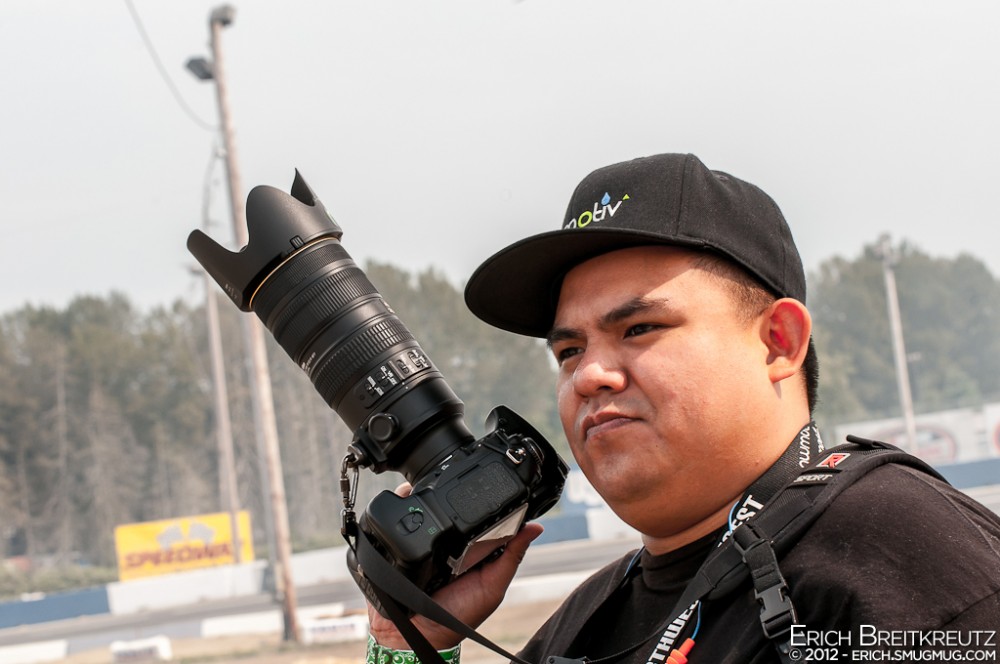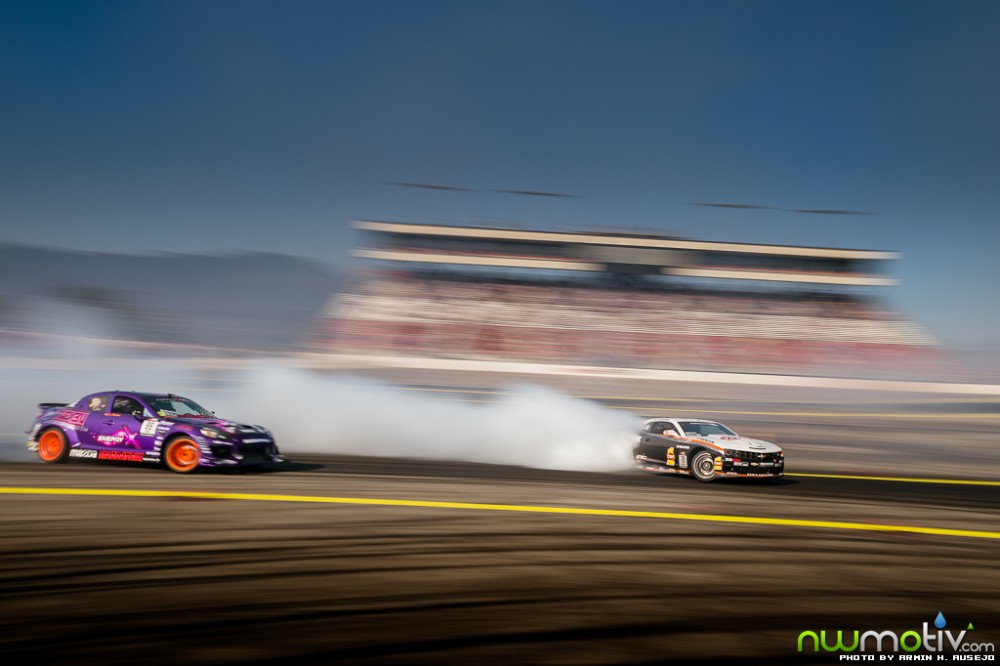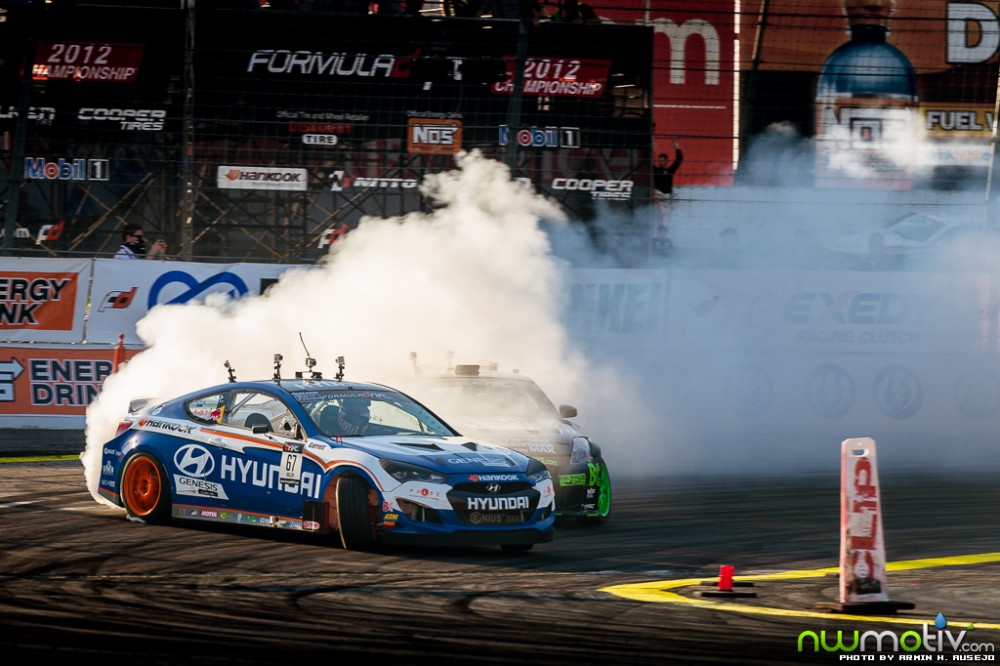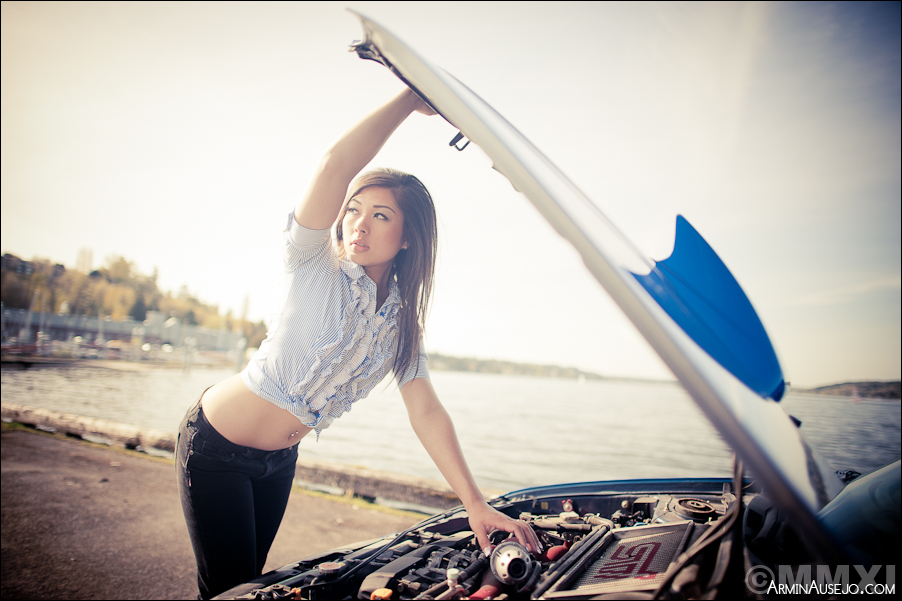The beauty of having a DSLR is the ability to change lenses, given the type of photo you want and the situation. However, the multitude of lens options can be quite daunting, so it really helps to at least know what all the numbers and letters mean. Each of these numbers and letters can help guide you to figure out if the lens you’re looking at is indeed what you really need. First and foremost, let’s take a look at focal length.
Focal Length
Focal length is determined by the length in millimeters noted on the lens itself. The reason why lens manufacturers decided to measure this is millimeters isn’t important for our needs, but if you’re truly curious, feel free to do the math with Bob Atkins here. The main point to remember is that a short distance means you get a wider angle, whereas a longer distance gives you more zoom power, or “telephoto.” The “normal” focal length, which is as close as possible to what our own eyes see in 20/20 vision, is 50mm when attached to a 35mm film camera. This same convention has transferred over to the digital world in what are known as “full frame” cameras, which have a camera sensor at the same size as a frame of 35mm film. Here are a couple examples to show the difference between wide angle and telephoto on a full frame camera:
24mm
200mm
Camera Sensor Size
The “full frame” camera sensor of course presents another set of challenges, since most consumer DSLRs use a smaller sensor, due to costs and technological limitations. How does this affect you? Well, the smaller sensors introduce a “crop factor,” which is different per manufacturer and camera model family. For example, Nikon’s crop factor for their consumer-level DSLRs (and early prosumer DSLRs like the D100, D200 and D300/D300s) is 1.5x, whereas Canon’s crop factor for their consumer-level DSLRs is 1.6x. What this means is that when you take a lens with a certain focal length, you must multiply that lens’ focal length in order to attain the 35mm or full frame equivalent. Confused yet? I’ll try to break it down more, using Nikon’s crop factor:
16mm on a Nikon cropped sensor camera X 1.5 crop factor = 24mm on a full frame camera
So, if you’re using a Nikon cropped sensor camera and want to achieve a focal length of 24mm on a full frame camera, you’ll need to use a focal length of 16mm. Why is this important? Simply put, because the same lens used on a full frame camera will yield different results than when used on a cropped sensor camera, because of the crop factor. Here’s an example to show the difference — first, 24mm on a full frame camera:
And here’s 24mm at Nikon’s 1.5x crop factor:
Notice how the crop factor creates a more zoomed in effect, and thus less wide angle? This is something you’ll just need to keep in mind if you’re using a DSLR with a cropped sensor. By in large, any DLSR with a cropped sensor can use a lens made for full frame, however full frame cameras will not necessarily use a lens designed for a cropped sensor to its maximum capabilities. Camera manufacturers design some lenses for cropped sensors simply because they take that sensor size into account, and thus the sensor size for full frame is just too big for the design of the lens. If you use a lens designed for a cropped sensor on a camera with a full frame sensor, you’ll get really bad vignetting around all the corners since the lens isn’t designed to allow light to hit the entirety of the full frame sensor.
It’s also important to remember that cropped sensor cameras also have a disadvantage when it comes to certain types of photos that simply aren’t possible without a full frame sensors. These photos tend to be those with a wide angle and wide aperture, of course resulting in a shallow depth of field. The reason why a cropped sensor camera cannot take these types of photos is because the lenses don’t exist, due to manufacturing and cost constraints. For example, this photo was taken with a D700 at 24mm, f/1.4:
In order to achieve this on a Nikon cropped sensor, you’ll need a lens that’s 16mm at f/1.4, which more than likely physically can’t fit on a camera body using the current technology of camera manufacturers. Thus, it’s more likely that manufacturers will move all of their DSLRs to full frame rather than develop a wide angle, wide aperture lens for a cropped sensor.
Which is going to be better for you? It really depends on what you shoot. For many people, using a cropped sensor camera won’t make any bit of difference and up until just a few years ago, everyone (even professionals) was using a cropped sensor camera anyway. As long as you choose the appropriate focal length for what you’re trying to achieve, then you shouldn’t have any problems. For example, people who cover events, shoot weddings, or work in photojournalism typically have a huge range of lenses with different focal lengths just to make sure they’re prepared for anything. However, many automotive photographers tend to stay in the normal and telephoto range, and often don’t shoot at the wide angle unless it’s for a specific purpose (such as a rig shot). On the opposite side of the spectrum, most landscape and architectural photographers tend to stay in the wide angle and short telephoto range since they often need to capture as much into the frame as possible. Once you’ve determined what you prefer to shoot, the next step in deciding what lens will be right for you comes down to constant or variable aperture.
Constant vs. Variable Aperture
Along with focal length and camera sensor size, another thing to consider when choosing a lens is its minimum aperture, and the type of glass being used. This also determines if you have a “fast” lens or a not-so fast lens or even slow lens. Generally speaking, a fast lens is a lens that has a wide, constant aperture, typically f/2.8 or lower. This is particularly important when it comes to zoom lenses. For example, a 24-70mm f/2.8 allows one to shoot wide open at f/2.8 at the wide end at 24mm, and also allows one to shoot wide open at f/2.8 when zoomed to 70mm, along with every focal length in between as well. On the other hand, Nikon’s old 18-70mm f/3.5-4.5 kit lens had a variable aperture, which means that at 18mm, the widest one could shoot was f/3.5, but when zoomed to 70mm, the widest one could shoot was f/4.5.
Why is this important? Well, remember that the wider the aperture (lower f-stop), the more light you’re allowing to go through your lens and to your sensor (or film). Since f/3.5 is a smaller hole than f/2.8, there is less light going into your camera. With less light going in, the longer it’ll take to auto focus, thus the lens isn’t as “fast” as the f/2.8. This also becomes and issue in low light situations, since a lens with a wider aperture will allow you to shoot photos without having to increase your ISO as much or need a tripod when there’s less light available. Moreover, keeping the aperture constant is important since when zoomed to 70mm or more, having a wider aperture allows you to have a more shallow depth of field and again, allowing for more light to enter the camera. This is particularly important in low-light situations, since you’ll be able to hand-hold your camera and still take sharp photos more often.
Of course, you do pay a higher cost for constant aperture lenses, but once you use one, you can easily spoil yourself after only a few minutes of use. A lens with a variable aperture may cost less than half the price of a constant aperture version.
Vibration Reduction / Image Stabilization
Each manufacturer has a different name and method for how they help reduce camera shake: Nikon calls it “Vibration Reduction” or “VR,” whereas Canon calls it “Image Stablization” or “IS.” Sony even has their system built into the camera rather than into their lenses. No matter what the system, the goal is to help reduce camera shake when shooting hand-held, often in low-light situations or when you’re photographing subjects in motion. More and more lenses are being introduced with this special feature and it’s often touted to help variable aperture lenses (which of course usually have smaller apertures) perform as well as wide aperture lenses in low-light. While they might be able to match the performance and stability in many aspects, it’s important to remember that there’s still no substitute for physically allowing in more light to your camera’s sensor, not to mention you still won’t have as much control over depth of field.
Types of Lenses
Once you’ve got all of the above more or less figured out, you’ve got a few different types of lenses to choose from. Here’s a quick break-down that covers the main lenses that DSLR users will ever encounter in their research, but of course it by no means covers all of the types of lenses out there.
Zoom Lenses
Zoom lenses are any lens that allows you to change the focal length. Most people use these since it allows freedom in composition. The lens that came with your DSLR when you bought it or with almost all of the point and shoot cameras out there is a zoom lens. While you do have freedom to zoom in or out for shots, generally the price you pay for this freedom is sharpness of the photo and smaller apertures. Exceptions to this tend to be in professional-level zooms, but of course these tend to be two or more times as expensive, since they usually have a constant aperture and higher quality glass.
Prime or “Standard” Lenses
Primes are lenses that have a fixed focal length, such as 50mm. They do not allow you to zoom, so you actually have to move around quite a bit in order to get the composition you want. While this may seem inconvenient for some people, shooting with primes can help you get better at composition, since you actually have to move around and change angles or positions to get the shot you want. Thus, it helps you concentrate more on the photo you want to take. On top of that, generally standard lenses are faster than their zoom lens counterparts, and allow for greater control over depth of field thanks to their wider apertures, such as f/1.8 all the way down to f/1 or f/1.2. To add to this, prime lenses tend to be much sharper than zoom lenses as well.
Macro Lenses
A very close-up view of a fly’s eyes or a bee’s wings is typically taken with a macro lens. These lenses allow you to zoom in very close on a subject and are specialized to having a very small focus distance, allowing you to get such striking photos. Due to the traits of macro lenses, control over depth of field is a bit different than with other lenses and thus require more specialized photography techniques.
Fisheye Lenses
If you ever watch a skating video, you’ll no doubt see fisheye lenses in use. These are the lenses that bend the image so much that everything looks a bit round, with a black round border around the image. This works well to get a very wide angle shot, but the image output is very distorted. Often times you’ll see these with very short focal lengths such as 8mm or 10.5mm. They’re very specialized lenses and aren’t used very often for normal usage.
Shift/Tilt Lenses
Primarily used for landscapes and architecture, these lenses are great for keeping the proper viewing angle with little or no distortion. Like fisheye lenses, they’re highly specialized and aren’t used very often by most photographers. The effect of a shift/tilt lens can be simulated in post-processing, but it’s still nowhere near the same.
Hopefully this overview of lenses wasn’t too confusing or complicated. If you have any questions, please don’t hesitate to contact us. Otherwise, best of luck in your lens-choosing adventures!






